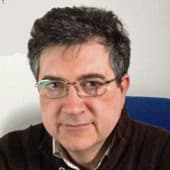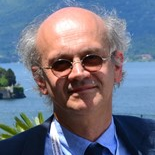Physical Agents: Measurement Methods, Modelling and Mitigations
A special issue of Environments (ISSN 2076-3298).
Deadline for manuscript submissions: closed (31 December 2019) | Viewed by 76532
Special Issue Editors
Interests: environmental acoustics; physical agents; noise modeling; big data
Special Issues, Collections and Topics in MDPI journals
Interests: environmental radioactivity; radon; dosimetry
Special Issues, Collections and Topics in MDPI journals
Special Issue Information
Dear Colleagues,
Physical agents (noise, vibration, ionizing, and non-ionizing radiation) are playing an increasing role in environmental protection and health. Urban noise and vibrations disturb hundreds of millions of citizens, causing measurable health effects. The, recently published, WHO Environmental Noise Guidelines for the European Region, showed stronger evidence of cardiovascular and metabolic effects. Modeling has a relevant role to determine noise exposure, according to the 49/2002/CE directive guides mitigation process in the actions plans due by law. Noise sources characterization and emission measurement methods take advantage of new techniques and instrumentations, such as beamforming, array detectors, etc. Big data processing and distributed sensor networks will enable tremendous improvement in spatial and temporal knowledge of sound levels. Human perception of and response to noise provide another perspective in the evaluation of annoyance and open new roads to understand how to design new spaces for the public.
Among physical agents, ionizing radiation is certainly by far the most harmful threat for public health. Actually, the adverse effects of human exposure to the radiation emitted by radionuclides or by X-ray equipment were already well recognized at the beginning of the XX century. Radioprotection principles are well established and the legislation of most States are all based on very common recommendations and standards. Regarding this matter, an important role is held by ICRP (International Commission on Radiological Protection) a prestigious non-governmental organization composed of international eminent experts. The Recommendations ICRP, periodically issued, are usually the guidelines for updating the legislation all over the world. Today, the most prominent issues in the field of ionizing radiation are the managing of radioactive wastes, especially related to the decommissioning of nuclear power plants and the exposure to natural radioactivity (NORM and radon). However, the study of ionizing radiation and in particular of environmental radioactivity, cannot be limited to radioprotection issues: The presence of natural and artificial radioisotopes in the environment was proven to be a very powerful tool for a better understanding of the complex dynamics in the atmosphere and in all the biosphere components.
Exposure to non-ionizing radiation is a widespread theme that includes extremely low frequencies (ELF) electric and magnetic fields and radiofrequency (RF) electromagnetic fields (EMF). Regarding ELF and RF fields there is a great concern regarding the possible effects of mobile phone use or living near infrastructure such as power lines, radio base stations, and broadcasting towers. The rapid growth and development of telecommunication technology enhancing the urgency of setting up new methods to evaluate human exposure. With the upcoming standardization of 5G radio access technologies, there is a clear need to develop RF EMF exposure assessment. Two of the main technical standard bodies, the IEC and IEEE, are working to harmonize electromagnetic field safety compliance assessment standards for 5G devices. Furthermore, a revision of the current ICNIRP (International Commission on Non-Ionizing Radiation Protection) Guidelines for limiting exposure to radio frequencies will soon be published and the new limits will be established on the basis of recent advances in the scientific knowledge on radiofrequency health effects.
Solar ultraviolet (UV) radiation can cause many adverse effects on health, such as skin cancer and cataracts and is the most important environmental risk factor for the development of non melanoma skin cancer. Accurate measurements of solar UV radiation are needed to evaluate exposure of people and workers. High quality ground base measurements are useful also to track the changes of solar UV due to the depletion of the ozone layer. UV exposure assessment by personal dosimeters or spectrometric measurements of solar UV irradiance are challenging themes in the field of protection against UV radiation.
In this Special Issue, the best 13 papers presented in the VII National Conference on Physical Agents in Stresa (Lago Maggiore, Italy) and invited by the scientific committee will be published after the international review process. The Special Issue will also collect other papers from the conference and from the international scientific community. These papers will follow the standard journal review process.
A large number of research topics could be considered as valid submissions, as related to all the previously mentioned issues. Authors are invited to submit their works related, but not limited, to the following topics:
- Noise action plan
- Transportation noise mitigation
- Policies and good practices for traffic management, noise planning
- Noise control
- Industrial noise remediation
- Evaluation of mitigation action performance
- Physical agents: models and algorithms for source characterization and outdoor sound propagation
- Environmental radioactivity
- Radon and NORM
- Optical radiations
- Extremely low frequency fields
- Radio and TV electromagnetic fields
- 5G
- Electromagnetic fields and health effects
Prof. Dr. Gaetano Licitra
Dr. Mauro Magnoni
Dr. Giovanni D’Amore
Guest Editors
Manuscript Submission Information
Manuscripts should be submitted online at www.mdpi.com by registering and logging in to this website. Once you are registered, click here to go to the submission form. Manuscripts can be submitted until the deadline. All submissions that pass pre-check are peer-reviewed. Accepted papers will be published continuously in the journal (as soon as accepted) and will be listed together on the special issue website. Research articles, review articles as well as short communications are invited. For planned papers, a title and short abstract (about 100 words) can be sent to the Editorial Office for announcement on this website.
Submitted manuscripts should not have been published previously, nor be under consideration for publication elsewhere (except conference proceedings papers). All manuscripts are thoroughly refereed through a single-blind peer-review process. A guide for authors and other relevant information for submission of manuscripts is available on the Instructions for Authors page. Environments is an international peer-reviewed open access monthly journal published by MDPI.
Please visit the Instructions for Authors page before submitting a manuscript. The Article Processing Charge (APC) for publication in this open access journal is 1800 CHF (Swiss Francs). Submitted papers should be well formatted and use good English. Authors may use MDPI's English editing service prior to publication or during author revisions.







